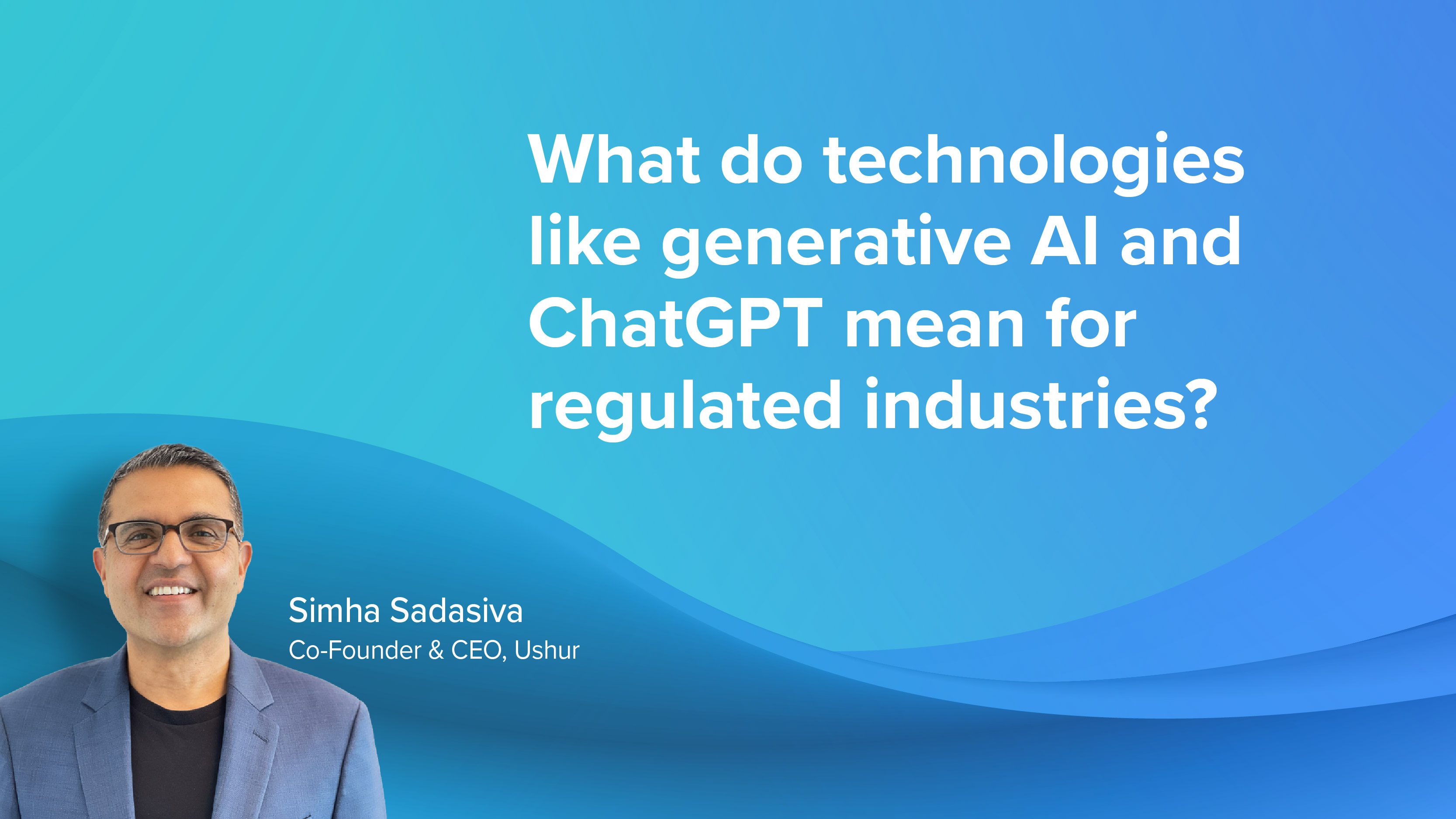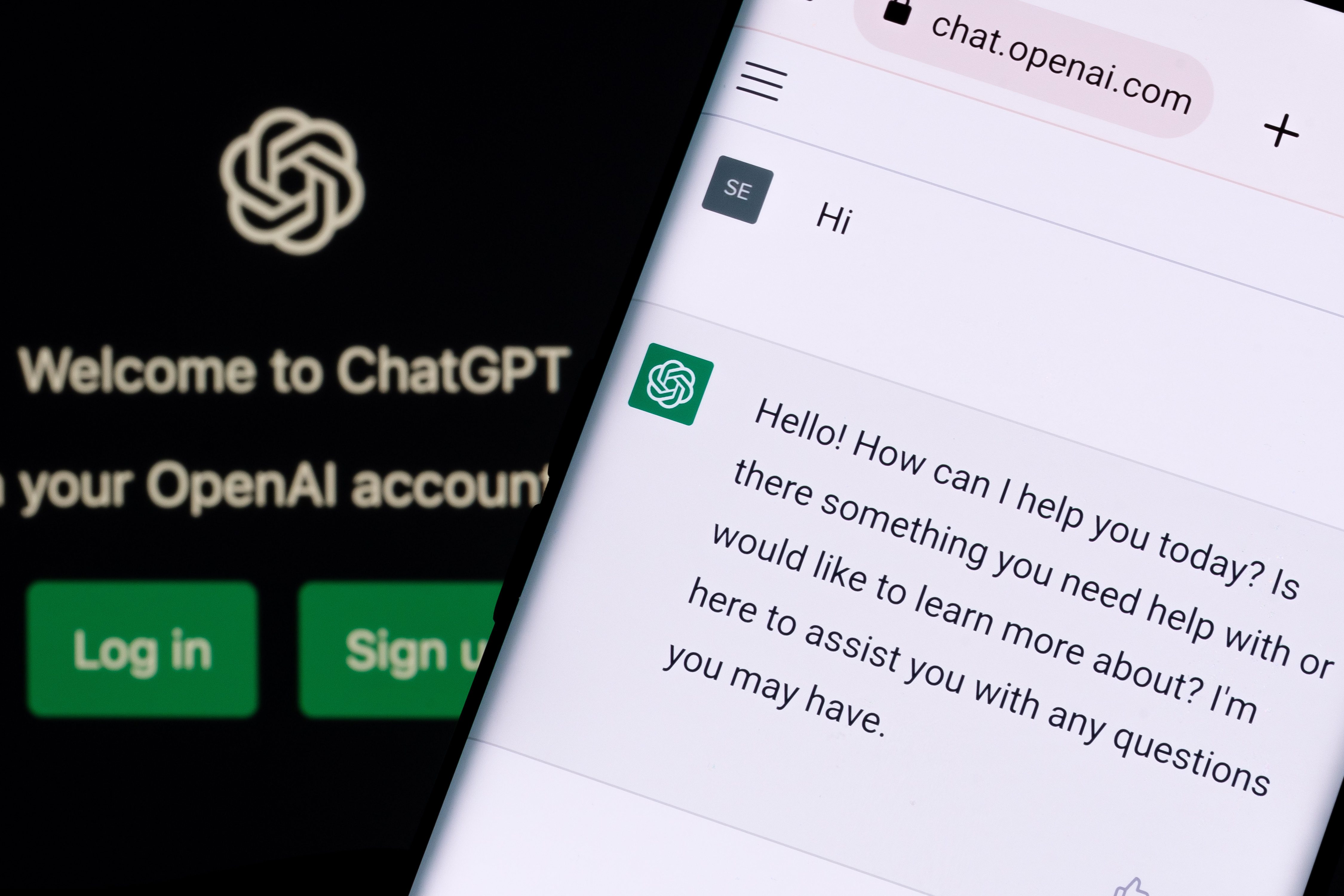What do technologies like generative AI and ChatGPT mean for regulated industries?


Get the best, coolest, and latest posts delivered to your inbox.
There’s been a significant amount of buzz and excitement around generative AI and ChatGPT lately, and for good reason. Not only is it a potentially transformative technology for just about every industry under the sun, it’s one that is rapidly opening up to a growing number of people.
One of the better qualities we humans have is a capacity for true creative genius. When transformative technologies are opened up, that ability to create is unlocked for a larger portion of the population. Think about GPS capabilities, for example, which started as a niche technology designed for and by the military. It was ultimately opened to everyone, and soon we had GPS capabilities built into every new car. Applications like Google Maps and Waze were created, eventually paving the way for companies like Uber and Lyft to disrupt the entire taxi industry. Today, I can go for a 15-mile run through the woods and know exactly where I am, where the trail markers are, every detail about every turn and elevation gain, all by simply wearing a touch-screen watch on my wrist. Touch screen technology has existed for a long time. GPS has existed for a long time, too. It’s the assembling of these pieces to create better human experiences that is truly profound, which is why technologies like ChatGPT are so compelling.
Natural language generation technology has been around for nearly a decade. Many companies have created Machine Learning models known as Large Language Models or LLMs. Essentially, this boils down to using massive amounts of data to train a model that can generate answers to questions. In its simplest form, think auto completion when writing an email or sending a text. The underlying technological principles are not new, but that level of accessibility is in its infancy. Today, we are just beginning to scratch the surface when it comes to the potential applications.
Think about the explosion of innovation that has followed our shift away from on-prem data centers to cloud infrastructure. Before Amazon, GCP or Azure the process of building, deploying and running software was an onerous one for founders. Startups needed massive early stage financing purely to run servers and storage racks. Now, the cost of starting a company is minuscule in comparison, largely thanks to the availability of cloud infrastructure. If you’re building application software today you don’t have to worry about all of the hardware investments and overhead you did a decade or two ago. Now that the cloud has become commoditized and is accessible to everyone, it has made it easier for more startups to get their innovations off the ground — and quickly. In turn, more innovations follow at an increasingly rapid pace.

A lot of the recent chatter around ChatGPT has been what generative AI will mean for long-standing incumbents. There have been significant layoffs across big tech, enough that most of us in the industry know someone impacted. Does ChatGPT mean the end of Google, Facebook, or their revenue models? While that may be the newsier angle, I don’t think it’s the right place to focus at all. These companies will regroup, and remain powerful. They have leveraged their incumbency well, and many have invested in LLMs and generative AI themselves. They have enormous assets that they can invest in creating new technologies based on generative AI, or fund smaller companies already doing the work. I don’t believe they’ll be disrupted nearly as much as people might think, they’re well governed companies with strong strategic vision. Going back to the example of Uber and Lyft, many pundits and experts predicted they’d mean the death of the auto industry. Those companies – and their considerable resources – were able to adjust and adapt, and today demand for personal vehicles often outstrips supply.
But when we talk about disruptive technologies, it’s an absolute certainty that eventually a giant or two will be knocked from their perch. Where a status quo that no longer serves the customer exists, the potential for disruption is ripe. Google has enough data banked to continue innovating for multiple generations. They are famous for moving on from projects and products that don’t work. They wrote the book on making adjustments. But if we look at other big companies that have crumbled quickly, they share some clear commonalities. Monopolistic practices and processes had set into the way they operated, making it impossible for them to leapfrog into the next generation. Blockbuster, Circuit City — these were companies in the good-to-great category that weren’t quick enough to adapt and adopt when a newer, better way of serving the customer came along. Today, this is the same challenge healthcare and insurance companies face. In these regulated industries, incumbency is no longer an advantage. How do they adapt and survive in the face of increasingly sophisticated consumer expectations?
If there’s one clear obstacle between regulated industries and the wider adoption of technologies like ChatGPT, it’s the inherent bias within them. Many people think of AI like it’s something with a personality that can imitate or replace a human. But at the end of the day, it’s just a machine. Even its ability to generate language is a very statistical, mathematical, science-driven outcome. Its ability to learn is based entirely on the data it is fed, and so it might not be representative of all populations but rather the populations contributing most actively to the data set. Those anomalies and biases, the false negatives and false positives, have to be weeded out. For some applications of generative AI, like ChatGPT’s simple search function, 70-80% accuracy is good enough for the user. For others, 98% might fall short.





For example, let’s say you’ve applied for a life insurance policy. On the other end, a team of underwriters looks at your application information — age, habits, personal data, income, lab results, blood tests, a physician’s summary — and manually identifies your risk against a predetermined set of markers. That level of risk then dictates how high a premium you’ll have to pay. Some applications are rejected outright. Today, it costs most life insurance companies upwards of $500 just to reject a life insurance application. A technology like generative AI can come to the same conclusion regarding those risk factors based on the biomarkers in your application at a fraction of the cost. Of course, an approved application carries a higher financial risk for the provider than a rejected application. So while a company may be able to use technology that is only 70% accurate to reject applications, that rate won’t cut it for approving them. Regardless, even if just half the manual work is eliminated customers will be served more quickly and effectively at a lower cost to the provider. The immediate opportunity for industries like healthcare and insurance is to identify which applications they can accept under 100%, and begin to leverage generative AI for those tasks.
Applied to the world of healthcare and insurance, generative AI has enormous potential capabilities. For customers of these industries, costs continue to go up and access to care is dwindling. In the United States especially, going to the doctor is an experience full of friction. Recently, I started to feel a bit unwell the day before a long flight. It wasn’t an emergency situation, but a time sensitive one. Though I’ve been seeing my primary care physician for over 20 years, they couldn’t see me on short notice and sent me off to urgent care. All I really needed was a quick diagnosis to give me peace of mind before I sat on a plane for 16 hours. A technology like ChatGPT has the potential to provide a diagnosis like that, without requiring a trip to the doctor. Or worse, urgent care.
Access to healthcare is critical. I have better than average insurance, but still couldn’t get the help I needed when I needed it. Think of how it must be for one of the millions of people who don’t have the same quality of insurance or care. It shouldn’t be like that, nor does it need to be. Technologies like ChatGPT have the potential to democratize healthcare, to make it more available and accessible in a way that betters our collective quality of life. The big question for today’s incumbents is whether they’ll be the ones providing that improved experience, or whether they’ll go the way of Blockbuster. The opportunity to adapt and improve is at their fingertips, but action is imperative.